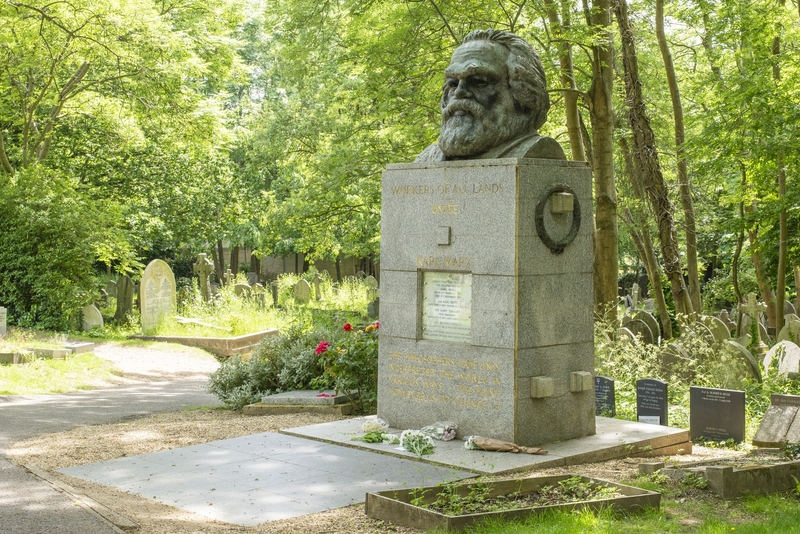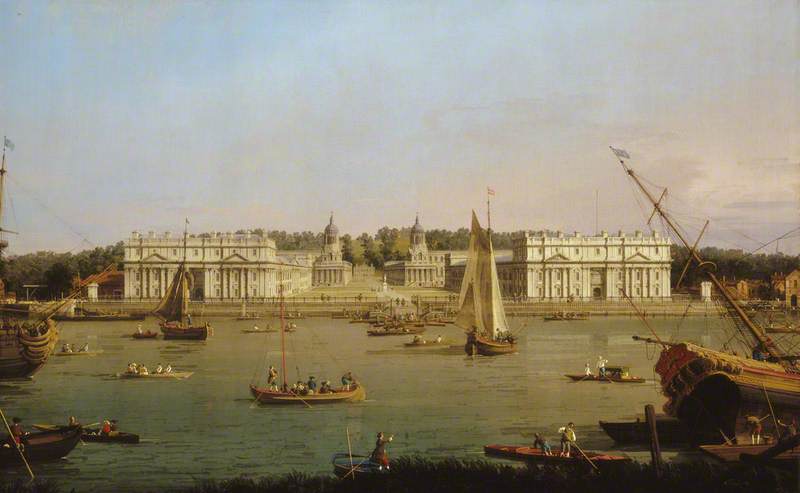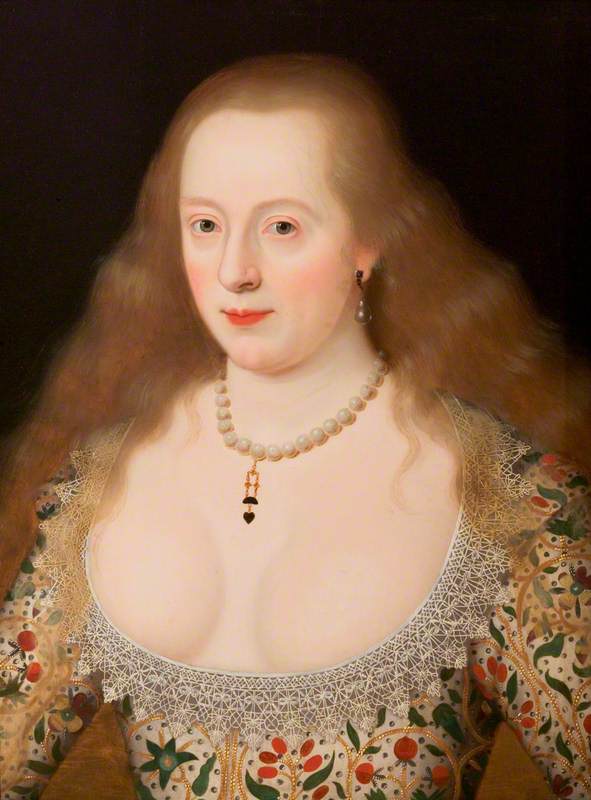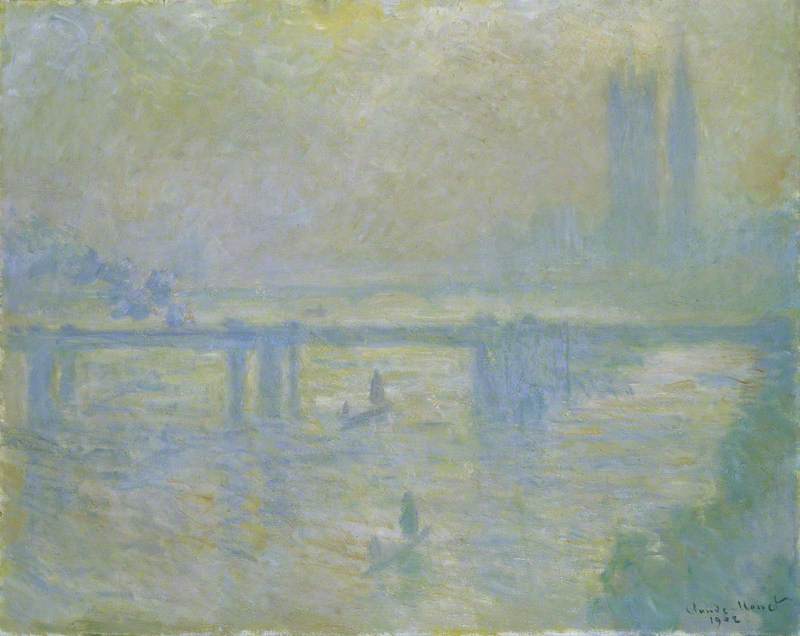Twelve UK museums come together with Art UK and Sotheby's to stage a month-long exhibition celebrating the UK's central role in the creative lives of leading international artists.
The free exhibition 'London: An Artistic Crossroads' is on display at Sotheby's New Bond Street Galleries from 25th May to 5th July 2024.
London: An Artistic Crossroads
Detail of 'Barges on the Thames', 1906, oil on canvas by André Derain (1880–1954), Leeds Museums and Galleries 
'When a man is tired of London, he is tired of life', the eminently quotable Samuel Johnson once said. 'There is in London all that life can afford.' He had a visceral feel for the city's raw and raucous energies, just as he understood its magnetic attraction to anyone with a questing, curious mind. Johnson's idea of London is resoundingly affirmed in the stories of those drawn to the place, as he was, by creative need.
Think of the writers who have travelled to live and work in the city: Shakespeare at the Globe, creating a new world with each new play; Charles Dickens, simultaneously terrified and enthralled by life in the first great metropolis of the Industrial Revolution; Joseph Conrad, laying bare the decadence of empire in books written a stone's throw from the Thames.
William Shakespeare
1632 or 1663–1664
Martin Droeshout (1601–c.1650) 
Think of the radicals drawn to London to develop their ideas: Karl Marx, toiling away at Das Kapital beneath the dome of the British Library's reading room; Sigmund Freud, composing his last thoughts in leafy Hampstead. Think of all the musicians (especially popular musicians) who have come to the city to make their way in the world.
Tomb of Karl Heinrich Marx (1818–1883)
1956
Laurence Henderson Bradshaw (1899–1978) and Robert Armstrong (1913–2005) 
Think too of all the painters, the sculptors, the makers of things, who have come to London from afar. Think of Hans Holbein, called from Germany to paint at the court of Henry VIII; and of Anthony van Dyck, called from Flanders by Charles I to make his life in England's capital. Think of Canaletto, lured from Venice by the buzz and boom of the city on the Thames (so much broader, he was surprised to discover, than the Grand Canal).
Greenwich Hospital from the North Bank of the Thames
c.1752
Canaletto (1697–1768) 
Think of Claude Monet, who came in search of that same river's famous fogs and smogs, a Frenchman haunted by the ghost of London's greatest homegrown painter, J. M. W. Turner.
Think of Piet Mondrian, who arrived from Paris just before the outbreak of the Second World War, dreaming his unlikely dreams of an ideal world in a city under bombardment; and of Lucian Freud and Frank Auerbach, who came to London as children in that same era, refugees from Hitler's Germany.
Composition C (No. III) with Red, Yellow and Blue
1935, oil on canvas by Piet Mondrian (1872–1944). Lent from a private collection, 1981, on long term loan to Tate 
Think of the malcontent Francis Bacon, a runaway from an unhappy childhood in Ireland; of Paula Rego, a Portuguese émigrée; and many others besides.
Pope I (Study after Pope Innocent X by Diego Velázquez)
1951
Francis Bacon (1909–1992) 
The stories of such artists, or at least a chosen few of them, are the inspiration for the exhibition 'London: An Artistic Crossroads'. The show is both a homage to London, multicultural melting pot of global civilisation, and to all those who have come from other places to stir that pot, in such vigorous ways.
It also coincides with the bicentenary celebrations of London's great museum of Old Master paintings, The National Gallery, to which it is intended to complement. So while The National Gallery is sending 12 remarkable masterpieces from its own collection out and away from London, to 12 art institutions elsewhere in the country, this exhibition, a collaboration between Sotheby's and Art UK, does the exact reverse: it collects 12 extraordinary works of art from major regional collections and brings them together, in one room, in the capital city.
Travelling in perfectly contrary directions, the two initiatives exemplify the dynamic relationship that has always existed between London and the wider world. The city is like a star with a huge gravitational field but equally great radiance, drawing artists into its orbit then projecting their influence outwards, like so many rays of light.
No wonder then that the art produced there, by so many travellers and pilgrims, so many outcasts and refugees, should share a particular kind of restless energy. If Samuel Johnson thought London synonymous with life, the same could be said of the art of London. In its unpredictable variety, it proclaims the very many ways of being human.
Andrew Graham-Dixon, art historian and broadcaster
The free exhibition 'London: An Artistic Crossroads' is on display at Sotheby's New Bond Street Galleries from 25th May to 5th July 2024
You can download the free exhibition tour within Art UK's guide on Bloomberg Connects





























